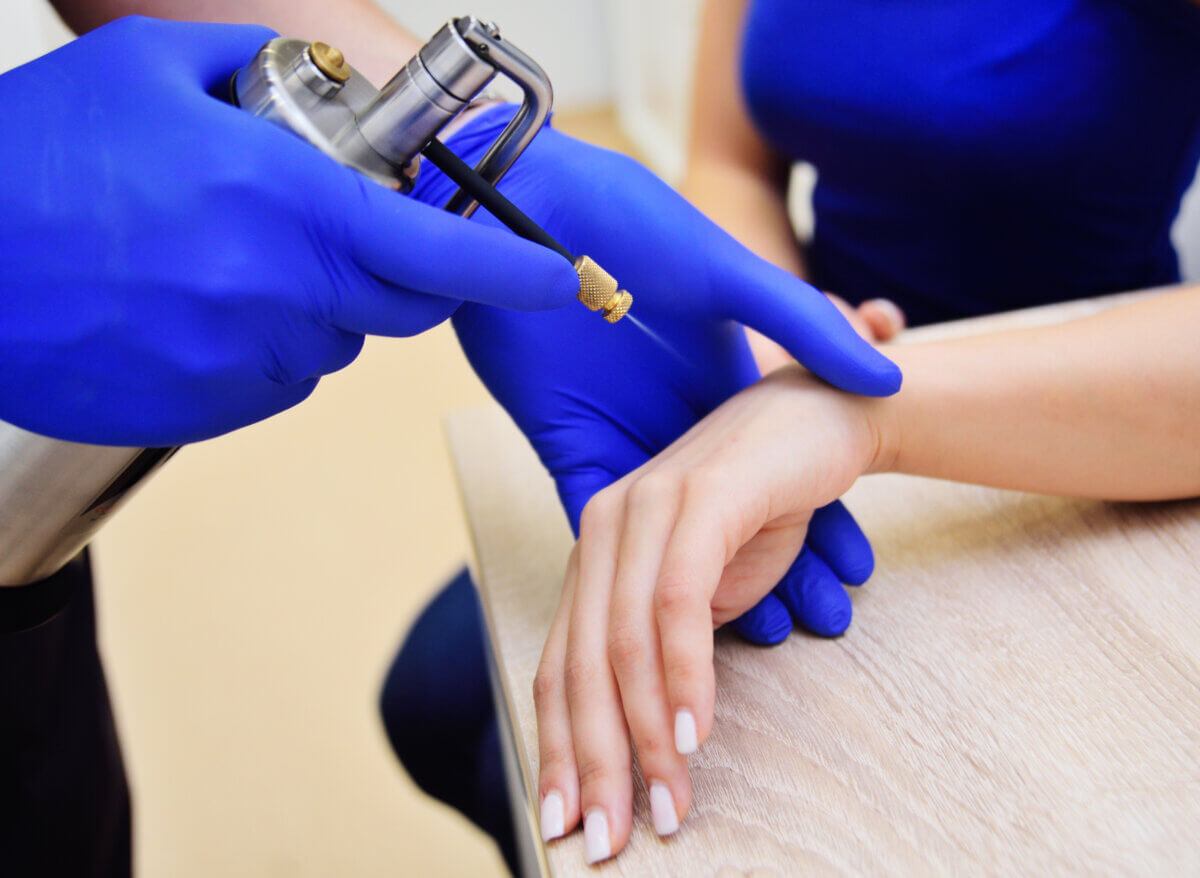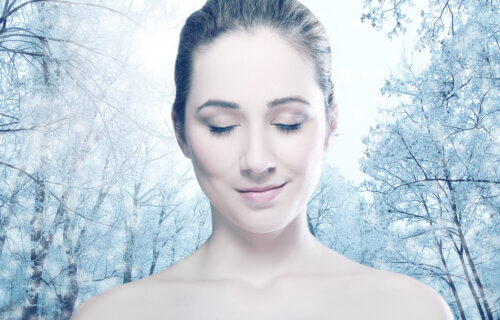Cryotherapy is back in the news since Hailey Bieber shared on social media that ice baths are part of her health maintenance regimen. Her TikTok video was captioned with, “Cold plunging has helped me a lot with anxiety and overall mood.”
Let’s take a look at how cold therapies have changed over the years and the possible benefits these treatments may have for everything from pain relief to weight loss.
Locally applied medical treatment
Cryotherapy means different things, depending on its intended purpose. The older type of cryotherapy is for tissue destruction. It often uses liquid nitrogen. You are probably familiar with it as a liquid that looks like it’s smoking or steaming when exposed to air. It is so cold it freezes whatever it touches immediately. Freeze a toy balloon instantly and it will shatter like glass. Medical uses include dipping a cotton swab into the liquid, then touching a wart, or a skin tag, or a pimple, and the target becomes dead tissue. All the lesions on which it’s used will slough off within a few days.
There are also instruments with long probes, the tips of which can be supercooled and applied to the uterine cervix to freeze off precancerous and cancerous cells. It may be used on skin with small areas of cancerous cells.

General, nonmedical treatment
Cryotherapy for physical and mental health benefits is a new trend. It is used as therapy for athletic injuries. Additional indications are under development. Its validity can be uncertain.
Facts
- Because cryotherapy is relatively new, benefits are yet to be established as fact.
- Freezing or near freezing temperatures are used.
- The most popular form of cryotherapy involves sitting in a cryotherapy booth for 3–5 minutes.
- Cold-water immersion is another cryotherapy method.
- Some people undergo cryotherapy facials, which apply cold to the face only.
- Some use a cryotherapy device to target specific areas, such as a painful joint.
- This is a non-medical treatment in a commercial setting.
- Talk with your doctor before trying cryotherapy.
- Pregnant women, children, and people with heart conditions should not try cryotherapy.
What are the potential benefits?
Pain relief and muscle healing
Cryotherapy can help with muscle pain, as well as some joint and muscle disorders, such as arthritis.
Doctors have long recommended using ice packs on injured and painful muscles. Blood circulation may increase after the ice pack is removed, promoting healing and relieving pain.
A study in the journal Rehabilitation found that cryotherapy offered transient relief from the pain of rheumatoid arthritis. The research found that ice packs could reduce the damaging effects of intense exercise. People who used cryotherapy also reported less pain.
A study in 2017 supports the benefits of cryotherapy for relieving muscle pain and speeding healing. The researchers found that immersion in icy water was more effective than whole-body cryotherapy.
Some studies do not support the role of cryotherapy in muscle healing. A 2015 review evaluated four studies of cryotherapy for relief of muscle pain but found no significant benefits.
Weight Loss
Some cryotherapy providers have suggested it can help with weight loss, but studies suggest otherwise. Cryotherapy alone will not cause weight loss. Being cold forces the body to work harder to stay warm, but the energy the body uses for this process is negligible.
Some cryotherapy providers claim that a few minutes of cold can increase metabolism for 24 hours. They claim that, with repeated treatments, people will no longer feel cold because their metabolism has adjusted and increased in response to the cold temperature. Their claim is not substantiated by data.
A small 2016 study in the British Journal of Sports Medicine found no significant changes in body composition after 10 sessions of cryotherapy. Since cryotherapy helps with muscle pain, it is suggested that it may be easier to resume a fitness routine following an injury.
Reducing inflammation
The immune system fights infection via inflammation. In some cases, the immune system becomes overly reactive, causing chronic inflammation. Heart disease, cancer, depression, dementia, and diabetes are all linked to chronic inflammation.
It has been suggested that reducing inflammation could, therefore, improve overall health and reduce the risk of numerous chronic ailments. Some studies do suggest that cryotherapy can reduce inflammation, but there is insufficient research in humans to establish that as fact. Most research has been done on rats.
A 2012 project assessed the possibility of cryotherapy being able to reduce the inflammation associated with dementia, mild cognitive impairment, and other age-related forms of cognitive decline.
Some preliminary research on cryotherapy and mental health also supports that in a third of people with depression or anxiety, cryotherapy reduced symptoms by at least 50 percent. This was a much greater reduction than in people who did not undergo cryotherapy.
Treating Migraine Headaches
In a 2013 study, researchers applied cryotherapy to the necks of people who had migraine headaches. The treatment was effective for reducing pain but did not eliminate it.

